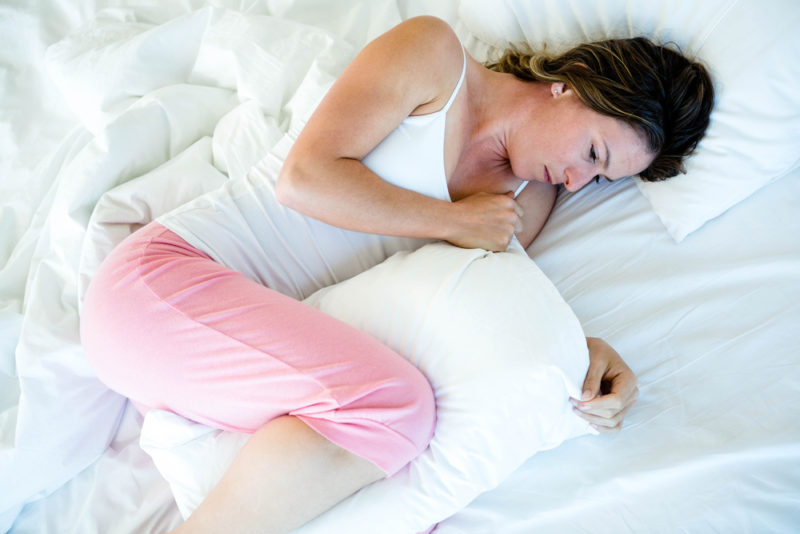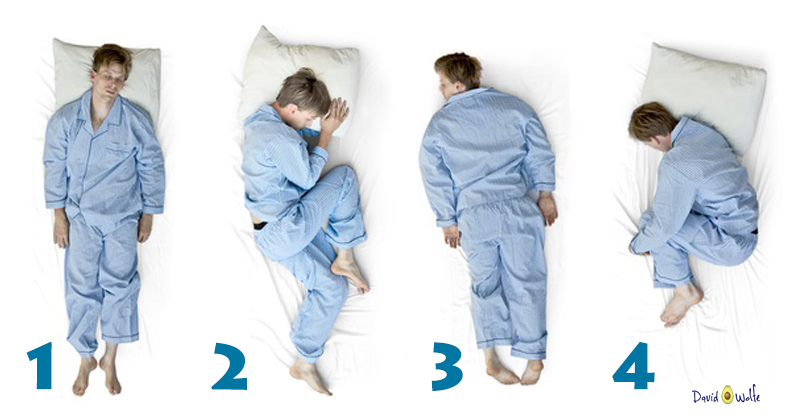Sleep is vital to our health, both mentally and physically. While we sleep, the body works to remove toxins and waste from the brain, rebuilds and repairs muscles and joints, and takes pressure off of the heart by reducing heart rate and blood pressure.
Sleep needs vary according to age, but for teens and adults, the recommended amount is about 8 hours each night. If you’re having trouble falling asleep, you’re tossing and turning throughout the night, or waking up with neck or back pains, it might be because you aren’t setting yourself up for a good night’s rest. There are many factors that can contribute to a good night’s sleep, including your sleep position.
1. The Best Position: On Your Back
Sleeping on your back is easier on your head, neck and spine. It allows them to stay aligned in a neutral position without adding any extra pressure. Dr. Michael Breus, “The Sleep Doctor,” is a clinical psychologist and a diplomat of the American Board of Sleep Medicine. He also recommends sleeping on your back. When asked what sleep position is best for our bodies in order to get a good night’s sleep, he replied, “As long as you do not snore, then sleeping on your back is best.”
2. The Second Best Position: On Your Side
For those who have sleep apnea, are prone to snoring, are pregnant, or often suffer from neck and back pain, sleeping on your side is the most beneficial. This position elongates the spine, which helps to counter back pain, and it opens up the oropharynx for better breathing.
The Left or Right Side?
Believe it or not, the side you sleep on can also play a role in your health. Sleeping on the right side has been shown to make heartburn worse, while sleeping on the left side can put a strain on organs such as the liver, lungs and stomach. Sleeping on the left side can also reduce acid reflux, and this position is recommended for pregnant women in order to gain optimal blood flow. If you’re a side sleeper, it is important to keep your head elevated enough that your head won’t tilt down. You can also try a pillow under your waist and one between your legs to keep things in line.
3. The Worst Position: On Your Stomach
While many of us sleep on our stomachs, this position doesn’t support the natural curve of the spine, which can cause the spine to strain while arching. Sleeping on your stomach puts pressure on the joints and muscles that can cause pain, numbness and tingling, and it can compromise breathing and circulation. This position should be avoided in those who suffer from neck or back pain.
4. The Second Worst Position: The Fetal Position
Sleeping on your side with your knees drawn up to your chest may be comforting, but it can lead to neck and back pain, as it puts a strain on the back and joints. Experts believe the shoulders and neck should be aligned when sleeping to promote the best sleep and prevent muscle and joint pain. Don’t forget to sleep in a dark, cool room on a comfortable mattress and turn all electronics off at least an hour before bed. If you need a little white noise to drown out any outside noise, try a fan, a humidifier or a dehumidifier.
Watch the video below for more information on sleep positions and your health!
h/t: medical daily


